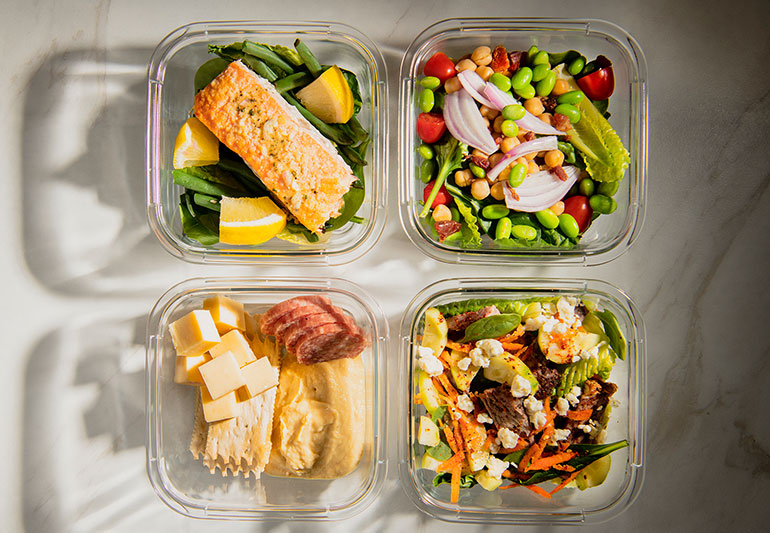
You can learn many types of cooking skills and they are available in many ways. These skills can range in confidence and application. These skills can be used to make delicious meals for your family and friends. These are just a few of the common cooking skills. You must practice them to be able to master these skills. You can improve your skills in cooking by taking a course in food preparation. You'll learn the basics of cooking, and you will also discover new recipes.
Learn
Many people believe that young people should learn to cook from an early age so that they can help their elders and become self-sufficient. Some people believe cooking skills should be learned once the child is older, while others feel that it can help a person become more productive and less likely to get into trouble. Whatever your opinion, learning how to cook early is beneficial for many reasons. Here are some:
Practice
Cooking skills can be described as the ability to prepare meals for others or yourself. These activities can be described in terms of confidence, attitude, and individual knowledge. It is possible to cook from menu planning through shopping for ingredients to cooking. It may be prepared fresh or lightly processed. A cooking class should provide a wide range of practical cooking experience. These skills can be learned in many different ways, including by taking a class or learning on your own.

Confidence
Confidence is key to enjoying cooking. It is the ability to trust your own skills while working with new ingredients. It is possible to build confidence in the kitchen. Lack of confidence in the kitchen can be the main reason why people don't enjoy cooking. Below are some tips to help you gain confidence in the kitchen. Here are some helpful tips:
Applied knowledge
There are many advantages to learning to cook but not enough research has been done to determine if these programs have any effect on the health and diets of participants. Research is necessary to increase the effectiveness of cooking classes, especially among those with limited access. The theory can help you understand the potential benefits of cooking skills and dietary modification. These benefits are discussed in this article, as well as the ways that cooking skills improve health. It also addresses some of the challenges in learning how to cook.
Learn from the best
The study examined various sources of learning skills in cooking. A large majority of participants identified their mothers as their primary source of learning. This finding might not be universal as the survey was cross-sectional. The results of the study were classified into four categories: "Mother Only" (n = 426), "Other sources" (n = 162), and [other sources]. The significant differences in the learning of cooking skills from different sources can be seen in Table 4. The research team evaluated differences in current cooking skill, diet quality, overall health, and overall well-being.

FAQ
What is the average time it takes to become a chef? What is the average career track?
A chef's career takes about five years. You will be able to learn basic cooking techniques as well as gain practical experience working in a kitchen. After you've completed your training you can apply to be a line cook or sous chef. The average salary for a chef ranges from $25,000 to $60,000 per year.
What should a beginner cook start with?
Start cooking something simple, such as pasta, rice, soup. You can learn how to cook by looking at a cookbook or watching a YouTube video. Cooking with others is more enjoyable. Try cooking together as a family, or have friends share the experience.
How can I get hired as a cook?
Word of mouth can help you get a job as an experienced cook. You might be able to find out about a restaurant looking for additional staff through your family and friends. A lot of restaurants also advertise their openings on bulletin boards or websites.
What skills do I need to get into culinary school?
You will need to know how to cook, understand food safety regulations, and be able work under pressure in order to become a chef. To learn how cook, enroll in cooking courses at your local high schools or community colleges. Once you have mastered the basics of cooking, you will need to find work in a restaurant and catering company.
What is the difference between a chef & a cook?
A chef prepares meals for others. A cook prepares food for himself or herself. While both jobs involve preparing food, a chef works directly with customers. They may need to make decisions about what they will serve to their guests based upon their preferences. A cook doesn't need to interact with clients. He or she makes sure that the food is delicious before serving it.
What are my options for learning about cooking?
Cooking classes are available throughout the country. Many schools offer courses in baking, pastry, and wine tasting. You can take a class at your local vocational school or community college if you are interested in learning more about cooking.
Do I need to go to culinary school to be a chef?
No. Many chefs learned their craft on their own. Some went to culinary school simply to gain experience. Most chefs prefer to go to culinary school to expand their professional opportunities. Culinary schools give students hands-on experience, which allows them to develop valuable skills as well as improve their culinary knowledge.
Statistics
- The median pay for a chef or head cook is $53,380 per year or $25.66/hour, according to the U.S. Bureau of Labor Statistics (BLS). (learnhowtobecome.org)
- under 10 Kids have been taught that there is special food just for them, and Fiese says that 10 percent of kids will throw a tantrum if they don't get the food they want. (washingtonpost.com)
- You'll be amazed that over 90% of CIA students receive scholarships and grants to finish their culinary studies. (ischoolconnect.com)
External Links
How To
How to make a perfect Omelette
Omelets are my favorite breakfast dish. How do you make them perfect? I've tried many recipes and different methods but none have worked. I have some tips and tricks to help you make delicious, fluffy omelets every single morning.
First, eggs can be very temperamental ingredients for making omelets. Eggs must be purchased fresh, preferably organic, and kept chilled until ready for cooking. They must be kept cool, otherwise the whites will not form properly and the yolks may become runny. This can make your omelets look bizarrely colored. If you're going to cook them immediately, it is best if the eggs are still warm.
Another tip is to separate your egg before adding it into the pan. You don't want any white to get mixed up with the yolk because this could cause the omelet to curdle.
If you add the egg directly onto the stovetop, you might end up burning the bottom part of the egg, which would ruin the texture of your omelet. Instead, heat the egg for 10 seconds in the microwave before placing it in the pan. The microwave heat is sufficient to cook the egg without overcooking.
Let's now talk about mixing eggs. When mixing eggs, it is important to thoroughly beat them. To do this, grab the bowl of the mixer and turn it upside down. Next, shake the bowl vigorously. This will whip the air around the bowl and mix the egg well.
Now comes the fun part: adding the milk to your mixture. Mix half of the milk with the eggs. Then fold the eggs in half into the remaining milk. You don't need to worry if streaks remain. They will disappear once you flip your omelet.
After folding the eggs fold the pan onto medium heat. When the oil starts to hot, wait for the pan to cook. Add 1/4 cup butter to the oil and swirl it around to coat all sides of the pan. The lid should be carefully opened. Sprinkle salt in the pan. An additional pinch of salt will prevent the omelet form sticking to your pan.
Once the omelet forms, cover the pan again. Let the top side set completely. Flip the omelet by using a spatula. Cook the other side for another minute or two. Take the omelet out of the pan and immediately serve.
This recipe works best when you use whole milk.